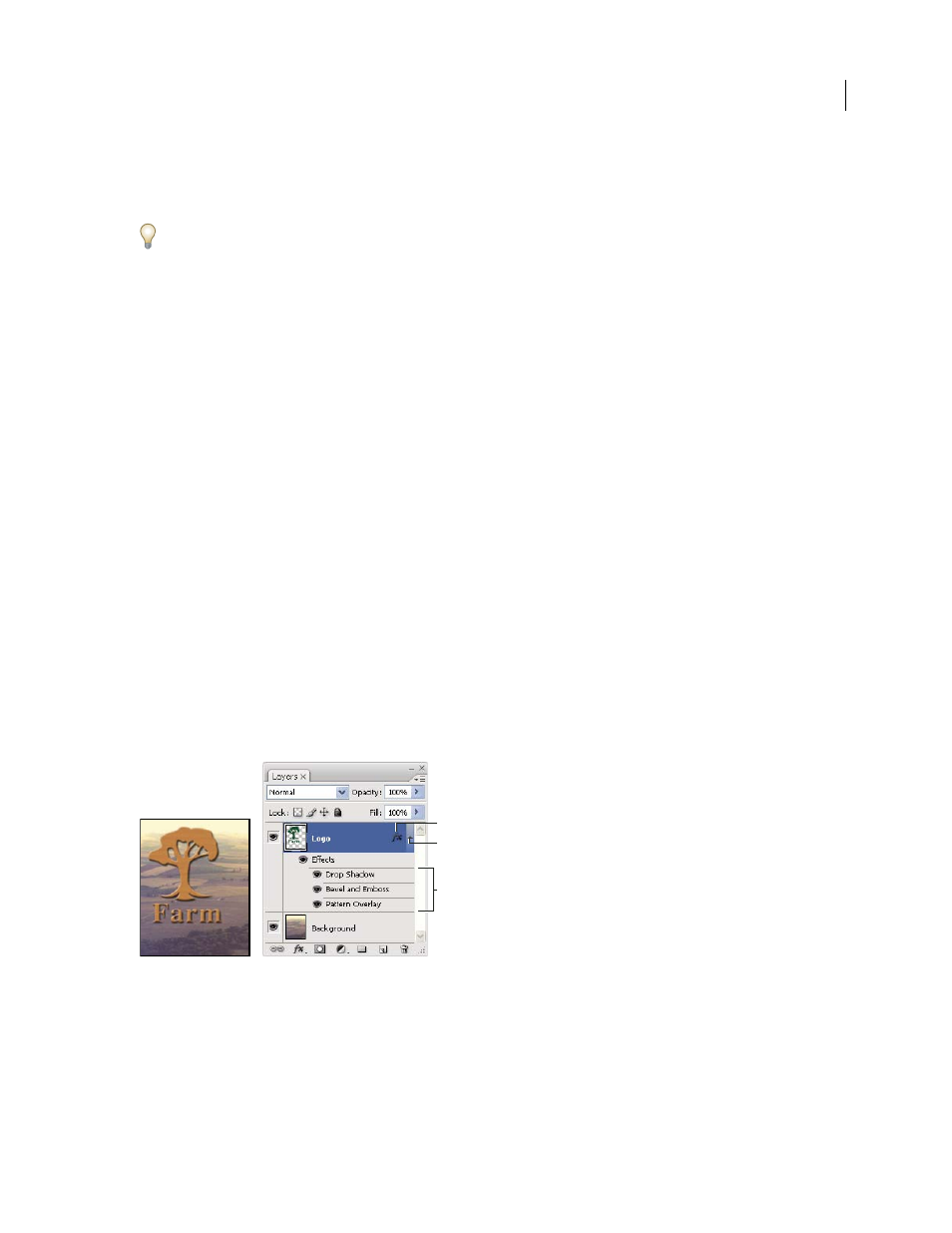Layer effects and styles, About layer effects and styles – Adobe Photoshop CS3 User Manual
Page 304

PHOTOSHOP CS3
User Guide
297
3
Use the This Layer and Underlying Layer sliders to set the brightness range of the blended pixels—measured on
a scale from 0 (black) to 255 (white). Drag the white slider to set the high value of the range. Drag the black slider to
set the low value of the range.
To define a range of partially blended pixels, hold down Alt (Windows) or Option (Mac OS), and drag one half of a
slider triangle. The two values that appear above the divided slider indicate the partial blending range.
Keep the following guidelines in mind when specifying blending ranges:
•
Use the This Layer sliders to specify the range of pixels on the active layer that will blend, and therefore appear, in
the final image. For example, if you drag the white slider to 235, pixels with brightness values higher than 235 will
remain unblended and will be excluded from the final image.
•
Use the Underlying Layer sliders to specify the range of pixels in the underlying visible layers that will blend in the
final image. Blended pixels are combined with pixels in the active layer to produce composite pixels, whereas
unblended pixels show through overlying areas of the active layer. For example, if you drag the black slider to 19,
pixels with brightness values lower than 19 will remain unblended and will show through the active layer in the
final image.
Layer effects and styles
About layer effects and styles
Photoshop provides a variety of effects—such as shadows, glows, and bevels—that change the appearance of a layer’s
contents. Layer effects are linked to the layer contents. When you move or edit the contents of the layer, the same
effects are applied to the modified contents. For example, if you apply a drop shadow to a text layer and then add new
text, the shadow is added automatically to the new text.
A layer style is one or more effects applied to a layer or layer group. You can apply one of the preset styles provided
with Photoshop or create a custom style using the Layer Styles dialog box. The layer effects icon appears to the right
of the layer’s name in the Layers palette. You can expand the style in the Layers palette to view or edit the effects that
compose the style.
Layers palette showing layer with multiple effects applied
A. Layer effects icon B. Click to expand and show layer effects C. Layer effects
When you save a custom style, it becomes a preset style. Preset styles appear in the Styles palette and can be applied
to a layer or group with a single click.
A
B
C
